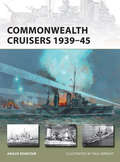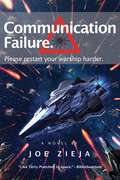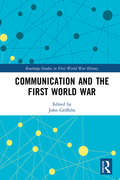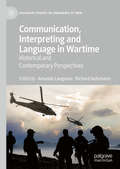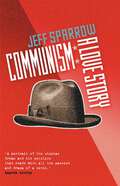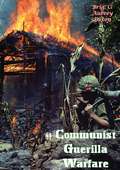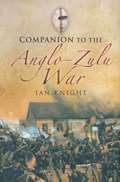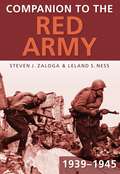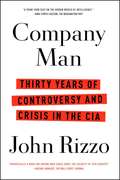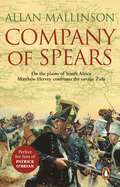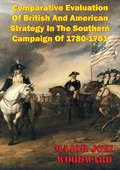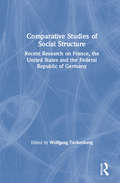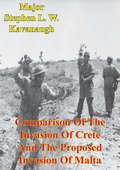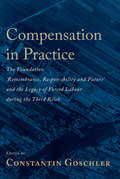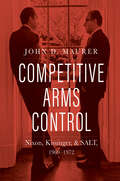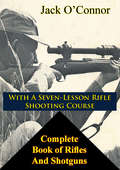- Table View
- List View
Commonwealth Cruisers 1939-45
by Paul Wright Angus KonstamIn the early 20th century Britain's largest colonies established their own small naval presence, and their ships fought alongside the Royal Navy during World War I. These fleets were expanded slightly during the inter-war years, and in 1939 the Royal Australian Navy, the Royal Canadian Navy and the Royal New Zealand Navy willingly joined the fight on behalf of the British Commonwealth. For the most part these small navies consisted of a few cruisers and destroyers, designed to protect territorial waters and to protect local sea lanes. However, these warships and their crews soon found themselves involved in a global war, and consequently were called upon to fight wherever they were needed, against the Germans, the Italians and the Japanese. At the start of the war the Royal Australian Navy was the largest of these Commonwealth navies, but the problems of supplying its wartime needs from the far side of the world hindered its expansion. From late 1941 it also found itself fighting a very different war from the British, and found itself working closely with the US Navy to contain the Japanese in the Pacific. Here it was supported by the smaller Royal New Zealand Navy - while both of these Commonwealth fleets had fought with distinction in the Atlantic and the Mediterranean, it was in the Pacific Theater that they would make their mark. Geography meant that the Royal Canadian Navy was thrust into the forefront of the Battle of the Atlantic, and while its fleet expanded rapidly during the war, its sailors also earned a reputation for commitment, professionalism and cheerfulness which helped overcome many of the tribulations of this gruelling naval campaign. The RCN ended the war as the largest of these three Commonwealth fleets. This book tells the story of these small cruiser forces, and the men who served the Allied cause so well during the long and brutal war at sea.
Communication
by Melissa Shaw-SmithRyan’s father is on a tour of duty with the National Guard. Everyone else in his family seems to have found ways to cope with his absence, but Ryan hasn’t! When his dad’s deployment is extended, Ryan has to find a way to stay in touch with him. A trip to the library may be just what he needs—both for communication with his dad, and finding his way to cope!
Communication Failure (Epic Failure Trilogy #2)
by Joe ZiejaIn this sequel to Mechanical Failure, Captain Rogers, despite his best attempts to do otherwise, has become the acting admiral of the 331st Meridan fleet. His first task: worrying. A lot.The rival Thelicosan fleet, under the influence of bad intelligence, a forbidden romance, and a communication officer with an eardrum injury, is about to break a two-hundred-year-old nonaggression pact. They have offered a vague, easily misinterpreted message: &“We&’re invading.&” Rogers isn&’t sure, but he thinks that&’s probably bad. War is hell, especially when you&’ve forgotten how to fight one.
Communication and the First World War (Routledge Studies in First World War History)
by John GriffithsDespite the voluminous historical literature on the First World War, a volume devoted to the theme of communication has yet to appear. From the communication of war aims and objectives to the communication of war call-up and war experience and knowledge, this volume fills the gap in the market, including the work of both established and newly emerging scholars working on the First World War across the globe. The volume includes chapters that focus on the experience of belligerent and also neutral powers, thus providing a genuinely representative dimension to the subject.
Communication, Interpreting and Language in Wartime: Historical and Contemporary Perspectives (Palgrave Studies in Languages at War)
by Richard Gehrmann Amanda LaugesenThis edited book provides a multi-disciplinary approach to the topics of translation and cross-cultural communication in times of war and conflict. It examines the historical and contemporary experiences of interpreters in war and in war crimes trials, as well as considering policy issues in communication difficulties in war-related contexts. The range of perspectives incorporated in this volume will appeal to scholars, practitioners and policy-makers, particularly in the fields of translating and interpreting, conflict and war studies, and military history.
Communism: A Love Story
by Jeff SparrowFor more than seventy years, idealists and rebels of all stripes saw in the Communist Party the best hope for a world remade. Who were the people who dedicated themselves to that beautiful dream? How did they experience its shimmering promise - and cope with its shattering collapse? This is the story of Guido Baracchi, the playboy and dilettante who experienced communism at its best - and its very worst. His love affair with Marxism took him from his father's astronomical observatory to the rough halls of the legendary Wobblies. He debated Bob Menzies at the University of Melbourne; he wooed novelist Katharine Susannah Prichard on a luxury ocean liner; he belonged to illegal organisations in two world wars. The Sun dubbed him 'Melbourne's Lenin', and ASIO classified him 'a person of bad moral character and violent and unstable political views'. From Weimar Germany to Stalin's Russia, from Melbourne's Pentridge gaol to the bohemian colony of Montsalvat, Baracchi entwined political intrigue with a series of tempestuous romances with poets, artists and playwrights. Yet communism remained his real love and communism broke his heart - in a betrayal that still resonates in the political choices available today.
Communist Guerilla Warfare
by Otto Heilbrunn Brig. C. Aubrey DixonThis book, originally published in 1954, represents a study of guerrilla warfare as practised by the Russians against the Germans in 1941-1945 and the anti-guerrilla measures taken by the Germans. Authors Brigadier Dixon and Dr. Heilbrunn have made an extensive study and the results recorded in this book will be of absorbing interest to the reader.
Companion to the Anglo-Zulu War
by Ian KnightThe Anglo-Zulu War was a defining episode in British imperial history, and it is still a subject of intense interest. The Zulu victory at Isandlwana, the heroic British defence of Rorke's Drift and the eventual British triumph are among the most closely researched events of the colonial era. In this historical companion, Ian Knight, one of the foremost authorities on the war and the Zulu kingdom, provides an essential reference guide to a short, bloody campaign that had an enduring impact on the history of Britain and southern Africa. He gives succinct summaries of the issues, events, armies and individuals involved. His work is an invaluable resource for anyone who is interested in the history of the period, in the operations of the British army in southern Africa, and in the Zulu kingdom.
Companion to the Red Army, 1939-1945
by Steven J. Zaloga Leland S. NessStalin's Red Army entered the Second World War as a relatively untried fighting force. In 1941, with the launch of Operation Barbarossa, it joined battle with Hitler's army, the most powerful in history. After a desperate war of attrition over four years the Red Army beat the Nazis into defeat on the Eastern Front and won lasting fame and glory in 1945 by eclipsing the military might of the Third Reich. This book begins with a review of the historical background of the Red Army in the years leading up to the outbreak of war in 1939, and follows with a discussion of the major themes in the development of Soviet forces during the `Great Patriotic War' that ensued in 1941. The Red Army's organisational structures are examined, from high command down to divisional level and below, Soviet combat arms and weaponry are also described in detail. This is an indispensable source of reference for anyone interested in the armies of the Second World War.
Company Commander
by Russell LewisIn 2008 Major Russell Lewis commanded a company of two hundred soldiers from the British Army's legendary Parachute Regiment on a six-month tour in the most dangerous part of Afghanistan.Company Commander is his story, a riveting first-person account of incredible bravery, telling what it is like to have 200 Paras depending on you constantly, to make decisions which can and do cost lives, to see men under your command killed and injured and being under the most intense pressure imaginable every minute of every day for six long months.Company Commander is a true leader's story – a unique and vivid mix of front-line battles and strategic decision making and an intensely personal and inspiring account of a tour in the most perilous theatre of war on the planet.
Company Man: Thirty Years of Controversy and Crisis in the CIA
by John RizzoThe “revealing” (The New Yorker) insider history of the CIA from a lawyer with a “front-row seat on the hidden world of intelligence” (The Washington Post). Former CIA director George J. Tenet called Company Man a “must read.”Over the course of a thirty-four-year (1976-2009) career, John Rizzo served under eleven CIA directors and seven presidents, ultimately becoming a controversial public figure and a symbol and victim of the toxic winds swirling in post-9/11 Washington. In Company Man, Rizzo charts the CIA’s evolution from shadowy entity to an organization exposed to new laws, rules, and a seemingly never-ending string of public controversies. As the agency’s top lawyer in the years after the 9/11 attacks, Rizzo oversaw actions that remain the subject of intense debate, including the rules governing waterboarding and other “enhanced interrogation techniques.” Rizzo writes about virtually every significant CIA activity and controversy over a tumultuous, thirty-year period. His experiences illuminate our nation’s spy bureaucracy, offering a unique primer on how to survive, and flourish, in a high-powered job amid decades of shifting political winds. He also provides the most comprehensive account of critical events, like the “torture tape” fiasco surrounding the interrogation of Al Qaeda suspect Abu Zubayadah, and the birth, growth, and death of the enhanced interrogation program. Company Man is the most authoritative insider account of the CIA ever written—a groundbreaking, timely, and remarkably candid history of American intelligence. This is “emphatically a book for anyone who cares about the security of this country” (The Wall Street Journal).
Company Of Spears: (The Matthew Hervey Adventures: 8): A gripping and heart-stopping military adventure from bestselling author Allan Mallinson that will keep you on the edge of your seat (Matthew Hervey #8)
by Allan MallinsonTHE SUNDAY TIMES BESTSELLING AUTHOR Allan Mallinson brings us another adrenalin-fuelled, absorbing adventure featuring Matthew Hervey. If you like Patrick O'Brian, Bernard Cornwell and CS Forester, you will love this! "Captain Matthew Hervey is as splendid a hero as ever sprang from an author's pen" -- THE TIMES"A damn fine, rip-roaring read" -- LITERARY REVIEW"The heir to Patrick O'Brian and C. S. Forester" -- OBSERVER"Outstanding storytelling!" -- ***** Reader review"Fab read" -- ***** Reader review*********************************************************1827: Matthew Hervey is on the look-out for a new posting.He soon finds one in the Cape Colonies, where there is need of a man to re-organise the local forces, and in particular to form a new company of horse.Accompanied by a captain from the disbanded Royal African Corps, Hervey heads out into the great South African plains and towards the territory of the Zulu and their legendary leader, King Shaka. But it is not till he nears the Umtata River that his fiercest battle really begins. For the Zulus fight like no army he has encountered before. As Hervey and his troops are plunged into battle, death is only a heartbeat away...Company of Spears is the eighth book in Allan Mallinson's Matthew Hervey series. His adventures continue in Man of War. Have you read his previous adventures A Close Run Thing, The Nizam's Daughters, A Regimental Affair, A Call to Arms, The Sabre's Edge, Rumours of War and An Act of Courage?
Company of Heroes
by Eric PooleOn May 10, 1970, during the Cambodian Incursion, Army Specialist Leslie Sabo Jr., 22-years old, married only 30 days before shipping out and on active duty for just 6 months, died as his patrol was ambushed near a remote border area of Cambodia. When an enemy grenade landed near a wounded comrade, Sabo used his body to shield the soldier from the blast. Despite being mortally injured, he crawled towards the enemy emplacement and threw a grenade into the bunker. The explosion silenced the enemy fire, but also ended Sabo's life. This attack by North Vietnamese troops killed eight of Sabo's fellow soldiers from the 101st Airborne Division and would come to be known as the "Mother's Day Ambush." Sabo's commanders nominated him for the Medal of Honor, but the request was somehow lost. A campaign to correct the oversight began in 1999, ultimately leading to legislation that eliminated the three-year time limit on awarding this medal. Forty-two years after his selfless acts of heroism during the Vietnam War saved the lives of his fellow soldiers; Leslie H. Sabo Jr. posthumously received the Medal of Honor on May 16, 2012. Using military records and interviews with surviving soldiers, journalist Eric Poole recreates the terror of combat amidst the jungles and rice paddies as Bravo Company 3rd Battalion, 506th Infantry Regiment, 101st Airborne forged bonds of brotherhood in their battle for survival. Company of Heroes offers an insight into the incredible and harrowing experiences of just a small number of men from a single unit, deep in the jungles of Vietnam and Cambodia.From the Hardcover edition.
Comparative Analysis Of The Military Leadership Styles Of George C. Marshall And Dwight D. Eisenhower
by Major James R. HillIn a constantly changing world threatened by ever increasing terrorist acts, American interests, both at home and abroad, require protection provided by great military leaders. In order to produce military leaders who can successfully meet the future challenges America faces, it is important to develop and refine them early and help them understand how to create and refine a successful leadership style. The process of developing leadership styles, however, is not easy and it requires a prodigious amount of determination, time, planning, training, mentoring, and refinement. One way to help develop leaders is to show them examples of previously successful leaders, leaders such as George C. Marshall and Dwight D. "Ike" Eisenhower. Marshall and Eisenhower were two talented and exceptional leaders and are great examples of American military leadership. Their leadership styles were indispensable during World War II, and it is important for leaders today to examine why their leadership styles were so successful.
Comparative Constitutional Law and Policy: Constitutional Courts as Mediators
by Julio Ríos-FigueroaThis book offers a new theoretical framework for understanding the mediator role played by constitutional courts in democratic conflict solving. The book proposes an informational theory of constitutional review in which constitutional courts obtain, process, and transmit information to parties in a way that reduces the uncertainty causing their conflict. The substantive focus of the book is the role of constitutional courts in democracies where the armed forces are fighting internal armed conflicts of different types: Colombia, Peru, and Mexico in Latin America and also Israel, Turkey, and Pakistan. Through detailed analyses of the political context, civil-military relations, and the constitutional jurisprudence on military autonomy and the regulation of the use of force the book shows that constitutional courts can be instrumental in striking a democratically accepted balance between the exercise of civilian authority and the legitimate needs of the military in its pursuit of order and national security.
Comparative Evaluation Of British And American Strategy In The Southern Campaign Of 1780-1781
by Major Joel WoodwardThis thesis is an analysis and evaluation of the British and American campaign strategies in the Southern Campaign of the War for American Independence. After over four and one-half years of inconclusive fighting in America, the British government developed a plan to restore Royal control of the American South where large numbers of Loyalist Americans were expected to rally in support of the Crown. Control of the southern provinces would allow the British army to isolate the North where the rebellion was strongest. In May 1780, the American army of the South surrendered to a British army at Charlestowne, South Carolina. The Americans raised a new army in the South, but it too was decisively defeated at Camden, South Carolina, in August 1780. American prospects in the Southern Department appeared bleak until the arrival of Nathanael Greene in December 1780. Despite a scarcity of resources, Greene rebuilt the American southern army and fought an inspired campaign of compound warfare to counter the expanding British control of the Carolinas. Lord Cornwallis led the British army on a protracted pursuit of Greene's forces across North Carolina following the American victory at Cowpens in January 1781. The British army, operating well beyond its supply lines, was exhausted by the pursuit of Greene. Despite winning a narrow tactical victory at Guilford Courthouse in March of 1781, the British force was rendered operationally ineffective. Cornwallis withdrew to Virginia where he would ultimately be trapped at Yorktown.This thesis demonstrates the application of operational design using the British and American strategies in the Southern Campaign as a historical case study. The methodology for this study is based on the linkages between ends, ways, and means through the elements of operational design. Nathanael Greene ultimately succeeded because he implemented a strategy that was designed to match his means to his ends.
Comparative Studies of Social Structure: Recent German Research on France, the United States and the Federal Republic
by Wolfgang TeckenbergA collection of essays with the purpose of stimulate interest and provoke discussion and criticism, and so contributing to our understanding of the three very different societies of France, the USA and Germany. Each essay stands on its own, and it is the authors’ intention to explain some of the differences between Germany and the United States in the first article. The second essay suggests that career mobility in France has more in common with social mobility in the United States than in Germany. The third essay, while not an explicitly comparative analysis, was included because it clearly shows the close links between the educational and occupational systems in Germany, a source of major differences with the United States, at least until the 1980s. The last section contains analyses of income attainment. Drawing on studies in the United States conducted by Erik O. Wright, the fourth essay compares the effects of education and position on income attainment. Since these can be construed as class effects, we were also curious about other types of potential positional and nonvertical income differences in a comparison of France, the United States, and the Federal Republic of Germany (the fifth essay). The concluding summary is very brief, giving only preliminary answers to the more detailed questions raised in the comparative empirical research projects.
Comparison Of Initiative During The 1864 Virginia Overland Campaign
by Major Jeffrey S. ShadburnThis study is an analysis of the competing initiative displayed between Generals Ulysses S. Grant and Robert E. Lee during Grant's 1864 Overland Campaign in Virginia.It begins with Lincoln's appointing Grant as Lieutenant General and General in Chief of all Union armies on March 9, 1864, and concludes with the failure of Grant's June 18 assault at Petersburg, Virginia. Grant and Lee's campaign intentions are analyzed, their means are compared, and their armies' actions are described and analyzed to determine that Lee displayed greater initiative than Grant.Lee demonstrated superior initiative during the campaign because he forced Grant to deviate from his plans and attack formidable defensive positions, and because he held the final initiative. Each of Grant's flanking movements was an attempt to gain the initiative, followed by the destruction of Lee's army. Each time Grant moved, Lee seized the initiative and barred Grant's progress. Grant came closest to achieving his desired objective when he crossed the James River and attacked Petersburg. The attack failed because Grant's senior commanders failed to sustain the Federal initiative.
Comparison Of The Invasion Of Crete And The Proposed Invasion Of Malta
by Major Stephen L. W. KavanaughIn 1941, after the conquest of Yugoslavia and Greece, senior German military leaders were considering two airborne operations, one for the invasion of Crete and the other for the invasion of Malta. The invasion of Crete was executed from 20 May to 1 June 1941 with heavy German losses. The invasion of Malta never took place even though the senior military leaders in the Oberkommando der Wehrmacht (OKW) recommended invading Malta over Crete because of its strategic importance, but were overridden by Adolf Hitler. A year later, while the North Africa campaign was being conducted, another invasion was planned for Malta, but within a few weeks of executing the plan it too was postponed and eventually cancelled. The primary focus of this research is to establish why in 1941 Crete was invaded, but Malta was not. The secondary focus is to establish why one year later a second planned invasion of Malta was rejected and abandoned, and what were the strategic repercussions of not invading Malta. The Axis never captured Malta, and the offensive capability of Malta was never destroyed, thus leading to the defeat of all Axis forces in North Africa.
Compensation in Practice: The Foundation 'Remembrance, Responsibility and Future' and the Legacy of Forced Labour during the Third Reich
by Constantin GoschlerFounded in 2000, the German Foundation "Remembrance, Responsibility and Future" is one of the largest transitional justice initiatives in history: in cooperation with its international partner organizations, it has to date paid over 4 billion euros to nearly 1.7 million survivors of forced labour during the Nazi Era. This volume provides an unparalleled look at the Foundation's creation, operations, and prospects after nearly two decades of existence, with valuable insights not just for historians but for a range of scholars, professionals, and others involved in human rights and reconciliation efforts.
Competition and Innovation in the U.S. Fixed-Wing Military Aircraft Industry
by Mark A. Lorell Gordon T. Lee Jeffrey A. Drezner John Birkler Anthony G. BowerAssess prospects for innovation and competition in the military combat-aircraft industry.
Competitive Arms Control: Nixon, Kissinger, and SALT, 1969-1972
by John D. MaurerThe essential history of the Strategic Arms Limitation Talks (SALT) during the Nixon Administration How did Richard Nixon, a president so determined to compete for strategic nuclear advantage over the Soviet Union, become one of the most successful arms controllers of the Cold War? Drawing on newly opened Cold War archives, John D. Maurer argues that a central purpose of arms control talks for American leaders was to channel nuclear competition toward areas of American advantage and not just international cooperation. While previous accounts of the Strategic Arms Limitation Talks (SALT) have emphasized American cooperative motives, Maurer highlights how Nixon, National Security Advisor Henry Kissinger, and Secretary of Defense Melvin Laird shaped negotiations, balancing their own competitive interests with proponents of cooperation while still providing a coherent rationale to Congress. Within the arms control agreements, American leaders intended to continue deploying new weapons, and the arms control restrictions, as negotiated, allowed the United States to sustain its global power, contain communism, and ultimately prevail in the Cold War.
Complete Book of Rifles And Shotguns, With A Seven-Lesson Rifle Shooting Course: with a Seven-Lesson Rifle Shooting Course
by William Sill Jack O'ConnorA comprehensive, fully illustrated guide to modern sporting rifles and how to use them, cartridges for small, medium and big game, barrels, stocks, sights, scopes, shooting techniques, where to hit them, modern shotguns and how to use them, double, pump, automatic, shotgun stocks, shells, chokes, care of your shotgun, history of sporting rifles and shotguns, complete glossary, PLUS Jack O'Connor's Seven Lesson "How to Shoot Course".
Complex Contracting
by Matthew Potoski Trevor L. Brown Matthew Potoski David M. Van Slyke Trevor L. BrownComplex Contracting draws on core social science concepts to provide wide-ranging practical advice on how best to manage complex acquisitions. Using a strong analytical framework, the authors assess contract management practices, suggesting strategies for improvement and ways to avoid the pitfalls of managing contracts for large and sophisticated projects. An in-depth analysis of the US Coast Guard's Deepwater program is included to illustrate ways to respond to real-world contracting challenges. This high-profile and controversial case consisted of a projected 25-year, $24 billion contract through which the US Coast Guard would buy a system of new boats, aircraft, communications, and control architecture to replace its aging fleet. The authors explore the reasons why this program, launched with such promise, turned out so poorly, and apply the lessons learned to similarly complex contracting scenarios. This engaging and accessible book has broad applicability and will appeal to policymakers, practitioners, scholars and students.
Complex Deterrence: Strategy in the Global Age
by T. V. Paul Patrick M. Morgan James J. WirtzAs the costs of a preemptive foreign policy in Iraq have become clear, strategies such as containment and deterrence have been gaining currency among policy makers. This comprehensive book offers an agenda for the contemporary practice of deterrence--especially as it applies to nuclear weapons--in an increasingly heterogeneous global and political setting. Moving beyond the precepts of traditional deterrence theory, this groundbreaking volume offers insights for the use of deterrence in the modern world, where policy makers may encounter irrational actors, failed states, religious zeal, ambiguous power relationships, and other situations where the traditional rules of statecraft do not apply. A distinguished group of contributors here examines issues such as deterrence among the Great Powers; the problems of regional and non-state actors; and actors armed with chemical, biological, and nuclear weapons. Complex Deterrence will be a valuable resource for anyone facing the considerable challenge of fostering security and peace in the twenty-first century.
